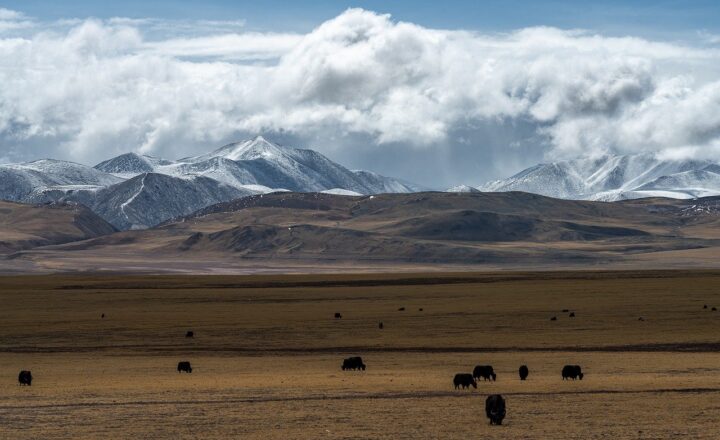Why Certain Rivers Are Considered Sacred and How They Shaped Religious and Cultural Practices
November 17, 2024

Throughout history, rivers have served not only as vital sources of life and sustenance but also as places of worship and spiritual significance. Many cultures around the globe regard certain rivers as sacred, attributing to them a divine essence and infusing them with cultural practices and religious ceremonies. In this article, we will explore why some rivers hold a sacred position in various societies and how they have shaped religious and cultural practices.
1. The Spiritual Significance of Rivers
Rivers are paramount in human civilization. They provide water for drinking, irrigation, and transport. But beyond their practical uses, many cultures perceive rivers as living entities imbued with spiritual significance.
– Symbol of Purity: Water is associated with purification in many religions. Taking a ritual bath in a sacred river is often seen as a path to spiritual cleansing and renewal. This belief is evident in practices like the Hindu ritual of ‘snan’ in the Ganges, considered the holiest river in India.
– Pathway to the Divine: Rivers are often seen as intermediaries between the earthly and spiritual realms. Many cultures believe that bathing in or visiting these rivers can facilitate communication with the divine.
– Mythological and Cultural Narratives: Every sacred river is enveloped in lore and legend, weaving a narrative that connects the river to creation myths and stories of deities. These narratives enrich the culture, giving communities a sense of identity and continuity.
2. Case Studies of Sacred Rivers
Let’s examine several rivers that are considered sacred and their cultural implications.
– The Ganges River (India):
The Ganges, known as ‘Ganga’ in India, is one of the most sacred rivers in Hinduism. It is believed that bathing in its waters washes away sins and offers a pathway to moksha (liberation from the cycle of life and death). The river is fiercely revered, and major religious events, such as the Kumbh Mela, draw millions of pilgrims who come to participate in rituals at its banks. The Ganges embodies the cultural heritage of India and its intrinsic connection to spirituality and daily life, despite facing severe pollution challenges.
– The Nile River (Egypt):
In ancient Egyptian civilization, the Nile was considered a life-giving source, essential for agriculture and sustenance. The river was personified as a god, Hapi, who symbolized fertility and abundance. The annual flooding of the Nile was celebrated, as it provided nutrient-rich silt for crops. Temples along its banks often served as sites of worship, and the river featured prominently in Egyptian mythology as a geographical and spiritual boundary.
– The Amazon River (South America):
For many indigenous people in the Amazon basin, the river is a sacred entity that nurtures not only the physical environment but also their spiritual beliefs. The Amazon is often viewed as a mother figure providing life. Rituals and ceremonies tied to the river reflect reverence for nature and the cosmos, with many tribes believing the river is populated by sacred spirits and ancestral beings.
– The Yangtze River (China):
The Yangtze, the longest river in Asia, is steeped in cultural significance for Chinese civilization. It serves as a historical boundary and is integral to Chinese folklore. Many river towns and cities along the banks celebrate annual festivals that honor river deities, symbolizing harmony between nature and human society. Festivals often include dragon boat racing, signifying community spirit and reverence for the river bend.
3. The Role of Sacred Rivers in Cultural Practices
Sacred rivers serve as the backdrop for various cultural practices and traditions, often facilitating community gathering and spiritual connection.
– Rituals and Ceremonies: Festivals and rituals centered around sacred rivers foster a sense of community. Events such as river processions, prayers, and cultural gatherings are common. In Hindu culture, for example, the immersion of idols in the Ganges during the festival of Durga Puja symbolizes the cycle of life, death, and rebirth.
– Environmental Stewardship: Sacred rivers often lead to traditions of conservation. Communities that revere their rivers typically engage in practices to protect them, as they regard the health of the river as vital to their spirituality. The reverence for the rivers promotes awareness around pollution and conservation efforts, urging communities to engage in eco-friendly practices.
– Art and Literature Influence: Sacred rivers have also inspired countless works of art, literature, and poetry. They often serve as metaphors for life, journey, and transformation. The poetry of Rumi, for instance, often depicts rivers as symbols of divine flow and connection.
4. The Contemporary Relevance of Sacred Rivers
In today’s fast-paced world, the veneration of sacred rivers offers important lessons in spirituality and environmentalism. Here are a few contemporary issues surrounding sacred rivers:
– Pollution and Conservation Efforts: As industrialization and urbanization continue to threaten sacred rivers worldwide, communities are increasingly mobilizing around conservation efforts. Activism focused on preserving the sanctity and health of these rivers highlights the importance of both ecological and spiritual health.
– Cultural Identity: In multicultural societies, the reverence for sacred rivers serves as a powerful symbol of cultural identity. They help maintain traditions and foster a sense of belonging within communities. Festivals and rituals can bridge differences between ethnic and cultural groups while promoting understanding and cooperation.
– Tourism and Economic Impact: Sacred rivers can also boost local economies through religious and eco-tourism. While tourism can promote awareness and funding for conservation, it also brings challenges related to infrastructure and environmental impact. Balancing economic benefits with spiritual and ecological integrity is crucial for maintaining the sanctity of these rivers.
Conclusion
Sacred rivers hold a deep and enduring significance across cultures and history. They symbolize life, purity, and the divine. As we navigate contemporary challenges, the wisdom embedded in the veneration of these rivers encourages us to cultivate respect for our environment and retain a spiritual connection to the world around us. Understanding the significance of sacred rivers can foster a greater appreciation for cultural diversity and inspire a collective effort to protect these vital waters for generations to come.







